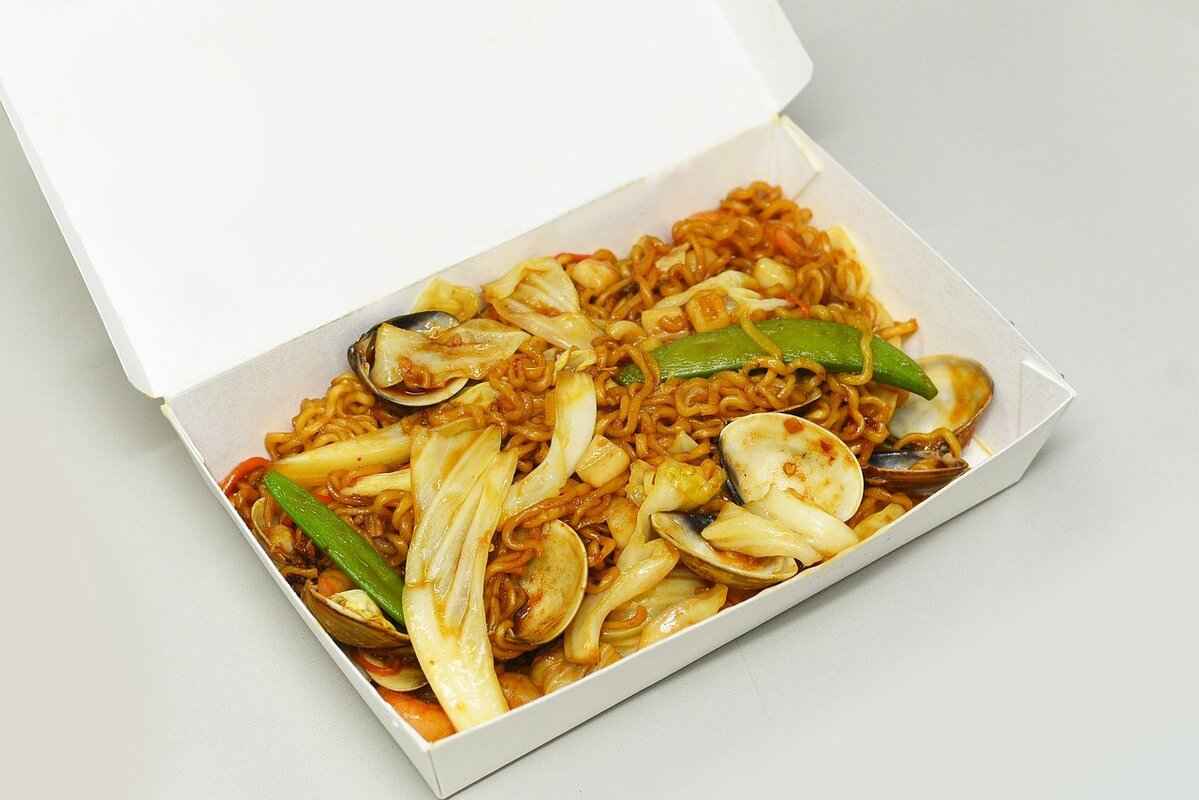This article delves into the innovative intersection of Asian culinary traditions and plant-based diets, showcasing how fusion cuisine is transforming vegan and vegetarian cooking into exciting and flavorful experiences.
What is Asian Fusion Cuisine?
Asian fusion cuisine is a culinary trend that blends traditional Asian flavors and techniques with elements from various other culinary traditions. This creative approach results in unique dishes that cater to diverse palates and dietary preferences, allowing for a wide range of flavors and textures.
Why is Veganism on the Rise?
The increasing popularity of veganism can be attributed to several factors, including health benefits, environmental concerns, and ethical considerations. As more individuals seek to adopt healthier lifestyles, chefs are exploring plant-based options that appeal to a growing audience.
- Health Benefits of a Plant-Based Diet: Studies show that adopting a plant-based diet can lead to improved health outcomes, including lower risks of chronic diseases.
- Impact on Heart Health: Research indicates that plant-based diets can significantly reduce the risk of heart disease due to lower saturated fat intake and higher fiber consumption.
- Weight Management and Nutrition: Vegan diets are often lower in calories and higher in essential nutrients, helping individuals maintain a healthy weight while ensuring they receive vital vitamins and minerals.
Environmental Considerations
The environmental impact of animal agriculture has prompted many to adopt vegan diets as a way to reduce their carbon footprint and promote sustainability. This topic is crucial in modern discussions about food choices.
How Asian Fusion Enhances Vegan Dishes
Asian fusion introduces bold flavors and diverse ingredients to vegan cooking, allowing chefs to create dishes that are not only nutritious but also exciting and satisfying.
- Incorporating Traditional Asian Ingredients: Ingredients such as tofu, tempeh, and various vegetables are staples in Asian cuisine, providing a rich foundation for vegan dishes.
- Creative Cooking Techniques: Techniques like stir-frying, steaming, and marinating are essential in Asian cooking, allowing for the development of complex flavors and textures in plant-based meals.
Popular Asian Fusion Vegan Dishes
Several vegan dishes have gained popularity by combining Asian flavors with plant-based ingredients, showcasing the versatility and creativity of fusion cuisine.
- Vegan Sushi Rolls: This creative take on traditional sushi uses ingredients like avocado, cucumber, and pickled vegetables, wrapped in seaweed and rice, offering a fresh and satisfying meal.
- Thai Green Curry with Tofu: This dish exemplifies the use of aromatic spices and coconut milk, creating a rich and creamy sauce that complements tofu and a variety of vegetables, making it a favorite among vegans.
The Future of Vegan and Vegetarian Asian Fusion
As the demand for plant-based options continues to grow, the future of Asian fusion in vegan and vegetarian cooking looks promising. With endless possibilities for innovation and creativity, chefs are eager to push the boundaries of traditional cooking.
- Emerging Trends in Plant-Based Cuisine: New trends such as lab-grown meat alternatives and innovative plant-based proteins are set to revolutionize the way we approach vegan and vegetarian cooking, particularly in Asian fusion.
- Global Influence and Culinary Exchange: The blending of culinary traditions from around the world will continue to shape the future of vegan cooking, as chefs experiment with flavors and techniques from various cultures to create unique dishes.
In summary, the fusion of Asian culinary traditions with vegan cooking not only enhances flavor and nutrition but also aligns with the growing demand for sustainable food choices. This innovative approach is set to redefine how we perceive and enjoy plant-based cuisine.

What is Asian Fusion Cuisine?
Asian fusion cuisine has emerged as a vibrant culinary trend that artfully combines traditional Asian flavors and cooking techniques with elements from various other culinary traditions. This innovative approach results in unique dishes that not only tantalize the taste buds but also cater to a wide range of dietary preferences and cultural palates. By merging diverse ingredients and methods, chefs are crafting meals that are both exciting and accessible to food lovers around the globe.
The growing popularity of Asian fusion cuisine can be attributed to several factors. Firstly, it offers a diverse range of flavors that appeal to adventurous eaters. The blend of sweet, sour, salty, and umami tastes creates a complex flavor profile that is hard to resist. Additionally, fusion cuisine allows chefs to showcase their creativity, leading to dishes that are not only delicious but also visually stunning.
Asian fusion cuisine is characterized by its ability to incorporate elements from various culinary traditions. For instance, you might find Mexican influences in a sushi roll with spicy jalapeños or Italian flavors in a ramen dish featuring pesto. This cross-cultural experimentation results in dishes that are not only original but also celebrate the richness of global gastronomy.
As plant-based diets gain traction, Asian fusion cuisine has adapted to meet the needs of vegan and vegetarian diners. Traditional Asian ingredients such as tofu, tempeh, and a variety of vegetables provide a solid foundation for creating satisfying and nutritious meals. The incorporation of bold spices and sauces enhances the flavors, making plant-based dishes more appealing.
Asian cooking techniques such as stir-frying, steaming, and marinating are integral to the preparation of fusion dishes. These methods allow for the development of complex flavors and textures, transforming simple ingredients into gourmet meals. For example, marinating tofu in a blend of soy sauce, ginger, and garlic can elevate its taste, making it a star ingredient in various dishes.
- Vegan Sushi Rolls: These rolls often feature ingredients like avocado, cucumber, and pickled vegetables, providing a fresh and satisfying option for sushi lovers.
- Thai Green Curry with Tofu: This dish combines aromatic spices and coconut milk to create a rich sauce that pairs beautifully with tofu and seasonal vegetables.
- Korean BBQ Cauliflower Wings: A delicious twist on traditional wings, these cauliflower bites are marinated in a spicy Korean sauce and baked to perfection.
As the culinary world continues to evolve, the future of Asian fusion cuisine looks promising. With the rise of plant-based alternatives and innovative cooking techniques, chefs are poised to explore new frontiers in flavor and presentation. The ongoing exchange of culinary ideas across cultures will undoubtedly lead to exciting developments in the realm of fusion cuisine.
In conclusion, Asian fusion cuisine represents a dynamic and evolving landscape that embraces creativity, diversity, and flavor. Whether you are a seasoned foodie or a casual diner, the world of Asian fusion offers something for everyone, making it a culinary adventure worth exploring.

Why is Veganism on the Rise?
The rise of veganism in recent years has become a significant cultural phenomenon, driven by a multitude of factors that resonate with a diverse audience. As more individuals seek to improve their health, protect the environment, and align their eating habits with their ethical beliefs, the demand for plant-based options has skyrocketed. This article delves into the reasons behind the increasing popularity of veganism, highlighting its health benefits, environmental impact, and ethical considerations.
Many people are turning to veganism due to the numerous health benefits associated with a plant-based diet. Research shows that adopting a vegan lifestyle can lead to:
- Lower Risk of Chronic Diseases: Studies indicate that vegans have a reduced risk of conditions such as heart disease, diabetes, and certain cancers.
- Weight Management: A vegan diet is often lower in calories and high in fiber, making it easier to maintain a healthy weight.
- Improved Digestive Health: The emphasis on fruits, vegetables, and whole grains promotes better digestion and gut health.
Another significant factor contributing to the rise of veganism is the increasing awareness of its environmental benefits. The production of animal products is a major contributor to greenhouse gas emissions, deforestation, and water pollution. By choosing a vegan diet, individuals can:
- Reduce Carbon Footprint: Plant-based diets typically require fewer resources and generate less pollution compared to meat-centered diets.
- Conserve Water: Animal farming is water-intensive, whereas growing plants for food uses significantly less water.
- Support Biodiversity: Shifting away from animal agriculture can help preserve natural habitats and protect endangered species.
Ethics play a crucial role in the decision to adopt a vegan lifestyle. Many individuals are motivated by a desire to prevent animal suffering and exploitation. The ethical arguments for veganism include:
- Animal Rights: Many believe that animals have the right to live free from harm and exploitation.
- Compassionate Choices: Veganism is seen as a way to align one’s dietary choices with personal values of compassion and kindness.
- Awareness of Factory Farming: Increased exposure to the realities of factory farming has led many to reconsider their dietary choices.
While some may view veganism as a fleeting trend, the growing body of evidence suggests that it is here to stay. With the rise of social media and the accessibility of information, more people are becoming informed about the benefits of a plant-based lifestyle. This shift is also reflected in the food industry, with an increasing number of restaurants and brands offering vegan options.
Chefs and culinary innovators are crucial in making veganism appealing to a broader audience. By creating delicious and visually stunning plant-based dishes, they help to change perceptions about vegan food. The fusion of traditional cooking techniques with modern plant-based ingredients has led to:
- Creative Vegan Dishes: Chefs are experimenting with flavors and textures, showcasing the versatility of plant-based ingredients.
- Increased Popularity: As more people experience flavorful vegan meals, the stigma around plant-based diets diminishes.
- Community Engagement: Culinary events and workshops are fostering a sense of community among those interested in veganism.
In summary, the rise of veganism is a multifaceted movement influenced by health, environmental, and ethical considerations. As more individuals embrace plant-based diets, the culinary world is responding with innovative and exciting options, making veganism more accessible and appealing than ever.
Health Benefits of a Plant-Based Diet
Adopting a plant-based diet has gained significant attention in recent years, as more individuals recognize the myriad of health benefits associated with this lifestyle choice. A shift towards consuming more fruits, vegetables, legumes, and whole grains can lead to a variety of improved health outcomes that contribute to overall well-being. This article delves deeper into the specific advantages of a plant-based diet, addressing common questions and providing insights backed by research.
- Reduced Risk of Chronic Diseases: Studies have consistently shown that individuals who follow a plant-based diet have a lower risk of chronic diseases such as heart disease, diabetes, and certain cancers. The high intake of antioxidants and anti-inflammatory compounds found in plant foods plays a crucial role in this protective effect.
- Enhanced Weight Management: Plant-based diets are typically lower in calories and fat, making them effective for weight management. The high fiber content aids in satiety, helping individuals feel full longer and reducing the likelihood of overeating.
- Improved Digestive Health: A diet rich in fruits, vegetables, and whole grains promotes healthy digestion due to their high fiber content. This can lead to a reduced risk of digestive disorders and improved gut health.
- Better Nutrient Intake: Plant-based diets are often rich in essential vitamins and minerals. Nutrients such as vitamin C, potassium, and magnesium are abundant in fruits and vegetables, contributing to overall health.
The heart health benefits of a plant-based diet are particularly noteworthy. Research indicates that such diets can significantly lower cholesterol levels and blood pressure, both of which are critical factors in reducing the risk of heart disease. By minimizing saturated fat intake and increasing fiber consumption, individuals can promote better cardiovascular health.
Yes, a plant-based diet can be instrumental in achieving and maintaining a healthy weight. The emphasis on whole foods, such as fruits and vegetables, provides a nutrient-dense yet low-calorie option for meals. This approach not only supports weight loss but also ensures that individuals receive necessary nutrients, helping prevent deficiencies.
Nutrition is a cornerstone of a healthy plant-based diet. It is important to ensure that individuals receive adequate protein, vitamins, and minerals. Incorporating a variety of foods, such as legumes, nuts, seeds, and fortified plant-based products, can help meet nutritional needs effectively.
In addition to personal health benefits, adopting a plant-based diet can also contribute positively to the environment. Reducing meat consumption lowers greenhouse gas emissions associated with animal agriculture, making it a sustainable choice for those concerned about climate change.
In summary, the health benefits of a plant-based diet are extensive, ranging from lower risks of chronic diseases to improved weight management and enhanced nutrient intake. As more people become aware of these advantages, the popularity of plant-based eating continues to grow, making it a viable option for those seeking to improve their health and well-being.
Impact on Heart Health
In recent years, there has been a growing interest in the relationship between diet and heart health. A significant body of research suggests that adopting a plant-based diet can lead to a remarkable decrease in the risk of developing heart disease. This is primarily attributed to two key factors: lower saturated fat intake and higher fiber consumption.
Studies indicate that individuals following a plant-based diet tend to consume less saturated fat, which is commonly found in animal products. This reduction is crucial because saturated fat is linked to increased cholesterol levels and, consequently, a higher risk of heart disease. In contrast, plant-based foods are typically lower in saturated fats and higher in healthy fats, such as those found in nuts, seeds, and avocados.
Fiber is another essential component of a heart-healthy diet. Foods rich in fiber, such as fruits, vegetables, whole grains, and legumes, not only help in lowering cholesterol levels but also improve overall digestive health. Research shows that diets high in fiber can lower blood pressure and inflammation, both of which are significant risk factors for heart disease.
One common concern regarding plant-based diets is whether they provide all the necessary nutrients for optimal health. Fortunately, a well-planned plant-based diet can be nutritionally complete. Key nutrients such as protein, iron, calcium, and omega-3 fatty acids can be obtained from various plant sources. For example:
- Protein: Found in legumes, tofu, tempeh, and quinoa.
- Iron: Available in lentils, chickpeas, and dark leafy greens.
- Calcium: Present in fortified plant milks, almonds, and leafy greens.
- Omega-3 Fatty Acids: Sourced from flaxseeds, chia seeds, and walnuts.
Emerging evidence suggests that not only can a plant-based diet reduce the risk of heart disease, but it may also help in reversing existing heart conditions. A notable study published in a leading medical journal demonstrated that participants who adopted a plant-based diet experienced significant improvements in heart health markers, including reduced arterial blockages and improved cholesterol levels.
The long-term benefits of a plant-based diet extend beyond heart health. Research indicates that individuals who follow such diets often experience better weight management, lower risks of type 2 diabetes, and improved overall well-being. Furthermore, the environmental benefits of reducing meat consumption contribute to a more sustainable future.
If you’re considering transitioning to a plant-based diet, start by incorporating more fruits, vegetables, and whole grains into your meals. Gradually reduce your intake of animal products and experiment with plant-based alternatives. Engaging with a nutritionist can also provide personalized guidance to ensure that your dietary choices support your health goals.
In summary, the evidence supporting the heart health benefits of a plant-based diet is compelling. By focusing on lower saturated fat and higher fiber intake, individuals can significantly reduce their risk of heart disease while enjoying a variety of delicious and nutritious foods. The journey towards a healthier heart begins with mindful dietary choices that prioritize plant-based options.
Weight Management and Nutrition
are critical components of a healthy lifestyle, and adopting a vegan diet can significantly influence these factors. Vegan diets, which are primarily plant-based, often lead to lower calorie consumption while being rich in essential nutrients. This combination helps individuals not only maintain a healthy weight but also ensures they receive vital vitamins and minerals necessary for overall health.
One of the primary reasons vegan diets are effective for weight management is their high fiber content. Foods such as fruits, vegetables, legumes, and whole grains are naturally high in fiber, which promotes satiety and reduces overall calorie intake. A diet rich in fiber can help control hunger, making it easier to stick to a healthy eating plan without feeling deprived.
Moreover, vegan diets tend to be lower in calories compared to traditional diets that include animal products. For instance, many animal-based foods are calorie-dense and high in saturated fats, which can contribute to weight gain. In contrast, plant-based foods are generally lower in calories and higher in water content, making them an excellent choice for those looking to lose or maintain weight.
In addition to being lower in calories, vegan diets are often packed with essential nutrients. These diets provide an abundance of vitamins, minerals, and antioxidants that are crucial for optimal health. For example, leafy greens are rich in vitamins A, C, and K, while legumes are excellent sources of protein and iron. By focusing on whole, plant-based foods, individuals can ensure they are meeting their nutritional needs while managing their weight effectively.
Another important aspect of vegan diets is their potential to reduce the risk of chronic diseases. Research has shown that individuals who follow plant-based diets have lower rates of conditions such as obesity, type 2 diabetes, and heart disease. This is largely attributed to the lower levels of saturated fat and higher levels of fiber found in these diets, which contribute to better metabolic health.
| Nutrient | Sources in Vegan Diet | Health Benefits |
|---|---|---|
| Protein | Legumes, nuts, seeds, tofu | Muscle repair, immune function |
| Iron | Spinach, lentils, quinoa | Red blood cell production |
| Calcium | Fortified plant milks, tofu, leafy greens | Bone health |
| Vitamin B12 | Fortified foods, supplements | Nerve function, DNA synthesis |
In summary, vegan diets offer a unique approach to weight management and nutrition. By focusing on whole, plant-based foods, individuals can enjoy a variety of flavors and textures while ensuring they are consuming fewer calories and more nutrients. As the popularity of veganism continues to rise, more people are discovering the benefits of this dietary choice, not just for weight management, but for overall health and well-being.
Environmental Considerations
The growing concern over our planet’s health has prompted a significant shift in dietary choices. One of the most impactful changes has been the rise of veganism as a response to the environmental challenges posed by animal agriculture. This article delves into the environmental considerations surrounding animal farming and how adopting a vegan diet can contribute to a more sustainable future.
Animal agriculture is a major contributor to greenhouse gas emissions, deforestation, and water scarcity. The livestock sector alone accounts for approximately 14.5% of global greenhouse gas emissions, primarily due to methane produced by ruminants and nitrous oxide from manure management. These emissions significantly contribute to climate change, making it an urgent issue to address.
Adopting a vegan diet can lead to a substantial reduction in one’s carbon footprint. By eliminating animal products, individuals can help decrease the demand for resource-intensive livestock farming. Studies indicate that a plant-based diet can reduce an individual’s carbon emissions by up to 50%. This shift not only benefits the environment but also promotes a more sustainable food system.
- Water Conservation: Animal agriculture is a water-intensive industry. It takes approximately 1,800 gallons of water to produce just one pound of beef. In contrast, plant-based foods typically require far less water to produce.
- Reduced Land Use: Raising animals for food requires vast amounts of land for grazing and growing animal feed. Transitioning to a vegan diet can significantly decrease land use, allowing for the restoration of natural habitats and biodiversity.
- Pollution Reduction: Animal farming contributes to soil and water pollution through runoff from fertilizers and animal waste. A shift to plant-based diets can help mitigate these environmental issues.
Vegan diets not only address the environmental impact of animal agriculture but also promote sustainability through various means:
- Local Sourcing: Many vegan diets emphasize the use of locally sourced and seasonal produce, which reduces transportation emissions and supports local economies.
- Diverse Agriculture: Plant-based diets encourage the cultivation of a wider variety of crops, which can enhance soil health and promote biodiversity.
- Innovative Practices: The rise of veganism has led to increased interest in sustainable farming practices, such as permaculture and regenerative agriculture, which focus on restoring ecosystems.
As consumers become more aware of the environmental implications of their food choices, their collective action can drive significant change. By choosing vegan options, individuals send a powerful message to food producers and policymakers about the demand for sustainable practices. This shift can lead to:
- Increased Availability: Greater demand for plant-based products encourages companies to expand their offerings, making vegan options more accessible.
- Policy Changes: Consumer preferences can influence government policies related to agriculture, leading to more support for sustainable farming initiatives.
The environmental impact of animal agriculture is profound, and the adoption of vegan diets presents a viable solution to mitigate these effects. By reducing greenhouse gas emissions, conserving water, and promoting sustainable practices, individuals can play a crucial role in fostering a healthier planet. As the conversation around sustainability continues to evolve, embracing a vegan lifestyle becomes not just a personal choice but a collective responsibility towards future generations.

How Asian Fusion Enhances Vegan Dishes
In recent years, the culinary world has witnessed a remarkable evolution in vegan cooking, largely influenced by the vibrant and diverse flavors of Asian fusion cuisine. This innovative approach not only embraces the principles of plant-based diets but also introduces a plethora of bold flavors and unique ingredients that elevate vegan dishes to new heights. By merging traditional Asian culinary techniques with modern vegan practices, chefs are crafting meals that are both nutritious and satisfying.
What Makes Asian Fusion Unique?
Asian fusion cuisine is characterized by its ability to blend various culinary traditions, resulting in dishes that are rich in flavor and creativity. This fusion allows for the incorporation of ingredients such as tofu, rice noodles, and an array of fresh vegetables, which serve as the foundation for many vegan recipes. By utilizing these ingredients, chefs can create meals that are not only healthful but also visually appealing and full of exciting textures.
Why Choose Vegan Asian Fusion?
The rise of veganism is fueled by a growing awareness of health, environmental sustainability, and ethical eating. As more individuals seek to adopt a plant-based lifestyle, the demand for delicious and fulfilling vegan options has surged. Asian fusion cuisine meets this demand by providing an array of dishes that cater to diverse tastes while maintaining a focus on plant-based ingredients.
Incorporating Traditional Asian Ingredients
- Tofu: A versatile protein source, tofu can be marinated and grilled, stir-fried, or used in soups, making it an essential component of many Asian vegan dishes.
- Tempeh: This fermented soybean product adds a nutty flavor and firm texture, making it an excellent meat substitute in stir-fries and curries.
- Vegetables: Seasonal and colorful vegetables such as bok choy, eggplant, and bell peppers not only enhance the nutritional value but also add vibrant colors to the plate.
Creative Cooking Techniques
Asian cooking techniques play a crucial role in enhancing the flavors of vegan dishes. Methods such as stir-frying, steaming, and marinating are essential for developing complex flavors and textures. For example, stir-frying vegetables with aromatic spices can create a delightful dish that is both quick to prepare and full of flavor.
Popular Asian Fusion Vegan Dishes
- Vegan Sushi Rolls: These rolls are a delightful twist on traditional sushi, featuring ingredients like avocado, cucumber, and pickled vegetables, all wrapped in seaweed and rice.
- Thai Green Curry with Tofu: Rich in aromatic spices and creamy coconut milk, this dish pairs perfectly with tofu and a variety of vegetables, making it a favorite among vegan diners.
- Vietnamese Spring Rolls: Fresh vegetables and herbs wrapped in rice paper, served with a tangy dipping sauce, offer a refreshing and healthy option.
Exploring Flavor Profiles
The beauty of Asian fusion lies in its ability to explore diverse flavor profiles. Ingredients like ginger, garlic, and chili can be combined to create dishes that are not only flavorful but also healthful. Additionally, the use of sauces such as soy sauce, hoisin, and sesame oil adds depth and richness to vegan meals.
Conclusion
As the culinary landscape continues to evolve, the integration of Asian fusion into vegan cooking presents exciting opportunities for innovation. By embracing bold flavors and diverse ingredients, chefs can create dishes that are not only nutritious but also thrilling to the palate. This fusion of culinary traditions is paving the way for a future where plant-based dining is both accessible and enjoyable for everyone.
Incorporating Traditional Asian Ingredients
In the realm of vegan cooking, Asian ingredients play a pivotal role in enhancing flavor profiles and nutritional value. By incorporating ingredients such as tofu, tempeh, and a variety of fresh vegetables, chefs can create dishes that not only satisfy the palate but also provide essential nutrients. This section will delve deeper into how these traditional Asian staples can be utilized in vegan cuisine, making meals both delicious and healthful.
Tofu, often referred to as soybean curd, is a versatile ingredient that has been a cornerstone of Asian cooking for centuries. Its ability to absorb flavors makes it an ideal base for a multitude of dishes. Rich in protein and low in calories, tofu is an excellent choice for those looking to maintain a balanced diet. Additionally, it contains essential amino acids, iron, and calcium, making it a powerhouse of nutrition.
Tempeh is another fantastic source of protein derived from fermented soybeans. This ingredient not only offers a unique texture but also enhances gut health due to its probiotic content. Its nutty flavor pairs well with various spices and marinades, making it a popular choice for stir-fries and salads. Furthermore, tempeh is packed with vitamins and minerals, including magnesium and phosphorus, which are crucial for overall health.
Vegetables are integral to Asian cuisine, providing vibrant colors, textures, and flavors. Ingredients like bok choy, shiitake mushrooms, and carrots are not only delicious but also rich in vitamins and antioxidants. Incorporating a variety of vegetables ensures that vegan dishes are not only visually appealing but also nutrient-dense. For instance, adding leafy greens can boost the iron content of a meal, while colorful peppers can enhance the vitamin C levels.
Asian cooking is renowned for its bold flavors, often achieved through the use of sauces and spices. Ingredients like soy sauce, ginger, and garlic can elevate the taste of any vegan dish. These flavor enhancers not only contribute to the overall taste but also provide health benefits. For example, ginger is known for its anti-inflammatory properties, making it a great addition to soups and stir-fries.
Combining traditional Asian ingredients can lead to innovative vegan dishes that delight the senses. For example, a stir-fried tofu and vegetable medley can be both quick to prepare and packed with nutrients. By utilizing different cooking methods such as steaming or sautéing, chefs can retain the nutritional value of the ingredients while creating satisfying meals. Additionally, experimenting with various herbs and spices can introduce new flavors, keeping the vegan diet exciting and varied.
Incorporating traditional Asian ingredients into vegan cooking not only enhances flavor but also ensures a nutritious and healthful diet. Tofu, tempeh, and a variety of fresh vegetables serve as the foundation for creative and satisfying meals. By embracing these ingredients, chefs can revolutionize the way we perceive vegan cuisine, making it an appealing option for all.
Creative Cooking Techniques
In the realm of vegan and vegetarian cooking, play a pivotal role in transforming simple ingredients into extraordinary dishes. Asian cuisine, in particular, has mastered various methods that not only enhance the flavors but also elevate the textures of plant-based meals. Techniques such as stir-frying, steaming, and marinating are not just traditional practices; they are essential tools that allow chefs to craft dishes that are both nutritious and satisfying.
Stir-frying is a quick and efficient cooking method that retains the vibrant colors and nutrients of vegetables. This technique involves cooking ingredients over high heat in a small amount of oil, allowing for rapid cooking while preserving the natural crunch and flavor of the produce. The use of a wok, a staple in Asian kitchens, ensures even heat distribution, making it ideal for preparing a variety of plant-based ingredients.
- Preserves Nutrients: Quick cooking times help maintain vitamins and minerals.
- Enhances Flavor: The high heat caramelizes natural sugars, adding depth to the dish.
- Versatile: Almost any vegetable can be stir-fried, making it a flexible option for creating diverse meals.
Steaming is another traditional technique that is gaining popularity in vegan cooking. This method involves cooking food with steam heat, which helps retain moisture and nutrients without the need for added fats. Steamed dishes are often lighter and allow the natural flavors of the ingredients to shine.
- Low in Calories: Steamed dishes typically require no oil, making them a healthy choice.
- Flavor Retention: Steaming preserves the natural flavors and colors of vegetables.
- Simple Preparation: This technique requires minimal effort, making it accessible for home cooks.
Marinating is a crucial step in Asian cooking that enhances the flavor profile of plant-based ingredients. By soaking tofu, tempeh, or vegetables in a mixture of sauces, spices, and acids, chefs can infuse dishes with layers of flavor. This technique not only improves taste but also helps in tenderizing ingredients, making them more palatable.
- Flavor Infusion: Marinating allows spices and sauces to penetrate the food, resulting in a more robust flavor.
- Texture Improvement: Acids in marinades can break down tough fibers, enhancing the overall mouthfeel.
- Variety of Options: Different marinades can completely change the character of a dish, offering endless possibilities.
Incorporating a combination of these techniques can lead to remarkable results. For instance, a stir-fried vegetable medley can be enhanced by marinating the vegetables beforehand, allowing them to absorb flavors before they hit the high heat of the wok. Similarly, steamed dumplings filled with marinated tofu and vegetables can provide a delightful contrast in textures and tastes.
In conclusion, the creative cooking techniques found in Asian cuisine are invaluable for anyone looking to elevate their vegan or vegetarian dishes. By mastering methods like stir-frying, steaming, and marinating, chefs can unlock a world of flavors and textures that make plant-based meals not only healthy but also incredibly delicious.

Popular Asian Fusion Vegan Dishes
have gained immense popularity, showcasing the innovative ways chefs are merging traditional Asian flavors with plant-based ingredients. This culinary trend not only highlights the versatility of vegan cooking but also emphasizes the creativity involved in fusion cuisine. Let’s explore some of the most beloved dishes that exemplify this exciting intersection of flavors.
- Vegan Sushi Rolls
Vegan sushi rolls are a delightful twist on the classic sushi experience. Made with fresh ingredients such as avocado, cucumber, and pickled vegetables, these rolls are wrapped in seaweed and rice, offering a refreshing and satisfying meal. Chefs often incorporate unique sauces like spicy mayo or sesame dressing to elevate the flavors, making it an appealing choice for both vegans and non-vegans alike.
- Thai Green Curry with Tofu
This dish is a perfect representation of how aromatic spices and rich coconut milk can transform a simple meal into a flavor-packed experience. The creamy sauce envelops tofu and a medley of colorful vegetables, creating a comforting yet exotic dish. Its balance of heat and sweetness makes it a favorite among those seeking a hearty vegan option.
- Vietnamese Pho with Plant-Based Broth
Traditionally a meat-based dish, pho has been reimagined with a plant-based broth infused with herbs and spices. This vegan version often includes rice noodles, fresh herbs, and a variety of vegetables, providing a warm and nourishing meal. The use of ingredients like mushrooms and seaweed adds depth to the broth, ensuring that the dish remains rich and satisfying.
- Korean BBQ Tofu Tacos
Combining the flavors of Korean BBQ with the convenience of tacos, this dish features marinated tofu grilled to perfection, topped with a tangy kimchi slaw. The fusion of textures and flavors creates a unique culinary experience that is both fun and delicious. It’s a great option for gatherings, as it caters to diverse dietary preferences.
- Japanese Ramen with Miso Broth
Ramen has become a staple in vegan cuisine, especially when prepared with a rich miso broth. This dish typically includes a variety of toppings such as bok choy, corn, and nori, making it not only visually appealing but also packed with nutrients. The umami flavor of miso provides a satisfying depth, ensuring that vegans can enjoy this beloved dish without compromise.
- Indian-inspired Vegan Biryani
Bringing together the vibrant spices of India, vegan biryani is a fragrant rice dish that often features a mix of vegetables, chickpeas, and aromatic spices like cumin and cardamom. This dish is not only filling but also a celebration of flavors, making it a popular choice for those looking to explore the fusion of different culinary traditions.
In conclusion, the rise of Asian fusion vegan dishes reflects a broader trend towards innovative and inclusive cooking. By combining traditional Asian flavors with plant-based ingredients, chefs are creating meals that are not only delicious but also cater to the growing demand for vegan options. This culinary evolution invites everyone to explore the rich and diverse world of vegan cuisine, proving that plant-based eating can be both exciting and satisfying.
Vegan Sushi Rolls
represent a delightful and innovative twist on traditional sushi, appealing to both plant-based eaters and sushi enthusiasts alike. By utilizing fresh ingredients and creative combinations, these rolls not only satisfy hunger but also offer a vibrant culinary experience that celebrates the essence of Asian cuisine.
Unlike conventional sushi, which often includes fish and seafood, vegan sushi incorporates a variety of plant-based ingredients. Common components include avocado, cucumber, carrots, and pickled vegetables. These ingredients are wrapped in nori (seaweed) and rice, creating a dish that is both visually appealing and nutritious.
There are several compelling reasons to opt for vegan sushi:
- Health Benefits: Vegan sushi is typically lower in calories and saturated fats compared to traditional sushi. It is rich in fiber, vitamins, and minerals, making it a healthier choice.
- Environmental Impact: Choosing plant-based options helps reduce the environmental footprint associated with seafood harvesting and animal agriculture.
- Ethical Considerations: For many, veganism aligns with their ethical beliefs regarding animal welfare, making vegan sushi an appealing option.
Creating delicious vegan sushi involves selecting the right ingredients:
- Rice: Sushi rice is typically seasoned with rice vinegar, sugar, and salt to achieve the perfect flavor.
- Nori: This seaweed wrap not only holds the ingredients together but also adds a unique umami flavor.
- Vegetables: Fresh vegetables like bell peppers, radishes, and asparagus can add crunch and color.
- Fruits: Ingredients like mango or pineapple can introduce a sweet contrast to savory elements.
- Condiments: Soy sauce, wasabi, and pickled ginger can enhance the overall flavor profile.
Making vegan sushi at home is a fun and rewarding experience. Here’s a simple step-by-step guide:
1. Cook sushi rice according to package instructions and let it cool.2. Place a sheet of nori on a bamboo sushi mat, shiny side down.3. Wet your hands to prevent sticking and spread a thin layer of rice over the nori, leaving a small border at the top.4. Arrange your chosen fillings (vegetables, fruits, etc.) in a line across the rice.5. Using the mat, roll the sushi tightly away from you, applying gentle pressure.6. Seal the edge with a little water and slice into bite-sized pieces.7. Serve with soy sauce, wasabi, and pickled ginger for dipping.
Vegan sushi can be customized in countless ways, allowing for creativity and personal preference:
- California Roll: A popular choice that typically features avocado, cucumber, and sometimes mango.
- Rainbow Roll: This colorful roll can be made using a variety of vegetables to create a vibrant presentation.
- Spicy Tofu Roll: Incorporating marinated and baked tofu adds a protein-rich element and a spicy kick.
Vegan sushi rolls are not only a delicious alternative to traditional sushi but also a reflection of the growing trend towards plant-based eating. With their vibrant ingredients and health benefits, these rolls are a perfect addition to any meal or gathering, showcasing the versatility of Asian fusion cuisine.
Thai Green Curry with Tofu
is a remarkable dish that showcases the vibrant and aromatic flavors of Thai cuisine while catering to vegan preferences. This delicious meal not only highlights the use of aromatic spices and coconut milk but also offers a rich and creamy sauce that beautifully complements tofu and an array of colorful vegetables.
The base of this curry is a blend of fresh herbs and spices, including green chilies, lemongrass, galangal, and kaffir lime leaves. These ingredients work together to create a fragrant paste that forms the heart of the dish. The addition of coconut milk not only enriches the sauce but also balances the heat from the spices, making it a harmonious blend of flavors.
Tofu serves as an excellent protein source in this dish, making it a staple in vegan cooking. It absorbs the flavors of the curry while providing a satisfying texture. Additionally, tofu is rich in essential nutrients, including calcium and iron, contributing to a balanced diet.
This dish allows for a variety of vegetables, making it not only colorful but also packed with nutrients. Common additions include:
- Bell peppers
- Carrots
- Broccoli
- Snow peas
These vegetables not only enhance the visual appeal of the dish but also add crunch and freshness, creating a well-rounded meal.
To achieve the perfect Thai green curry, it’s essential to master a few cooking techniques:
1. Start by sautéing the green curry paste in a bit of oil to release its flavors.2. Gradually add the coconut milk, stirring to combine.3. Introduce the tofu and vegetables, allowing them to simmer until cooked through.4. Finish with a splash of lime juice and fresh basil for added brightness.
Thai Green Curry with Tofu is best served with a side of jasmine rice or quinoa to soak up the delicious sauce. Garnishing with fresh herbs such as cilantro or basil can elevate the dish further, adding a burst of freshness.
In addition to being a flavorful dish, Thai Green Curry with Tofu is also packed with health benefits:
- Rich in Antioxidants: The herbs and spices used are known for their antioxidant properties.
- Heart-Healthy: Coconut milk contains medium-chain triglycerides that can support heart health.
- High in Fiber: The variety of vegetables contributes to a high fiber content, promoting digestive health.
In conclusion, Thai Green Curry with Tofu is more than just a meal; it is an experience that combines rich flavors with health benefits, making it a favorite among vegans and non-vegans alike. The balance of spices, creamy coconut milk, and nutrient-rich ingredients ensures that each bite is both satisfying and nourishing.

The Future of Vegan and Vegetarian Asian Fusion
The culinary landscape is evolving rapidly, and one of the most exciting developments is the rise of vegan and vegetarian Asian fusion cuisine. As more people seek plant-based alternatives, the integration of traditional Asian flavors with innovative cooking techniques opens up a world of possibilities. This article delves into the future of vegan and vegetarian Asian fusion, highlighting the trends and creative approaches that are shaping this delicious culinary frontier.
Asian fusion vegan cuisine combines the rich, diverse flavors of Asian culinary traditions with the principles of plant-based cooking. This unique blend creates dishes that are not only nutritious but also bursting with flavor. By utilizing traditional ingredients like tofu, tempeh, and a variety of vegetables, chefs can craft meals that appeal to both vegans and non-vegans alike.
The growing interest in veganism is driven by several factors, including health consciousness, environmental awareness, and ethical considerations. As more individuals recognize the benefits of a plant-based diet, the culinary industry is responding by expanding its offerings. This shift is particularly evident in Asian fusion cuisine, where chefs are experimenting with new ingredients and techniques to create exciting and satisfying meals.
One of the most compelling aspects of vegan Asian fusion is the use of innovative ingredients. Chefs are increasingly incorporating items such as:
- Jackfruit – a versatile fruit that mimics the texture of pulled pork.
- Chickpea flour – used to create savory pancakes or dumplings.
- Seaweed – rich in nutrients, adding depth to salads and wraps.
These ingredients not only enhance the nutritional profile of dishes but also introduce new textures and flavors, making vegan meals more appealing.
Asian cooking techniques such as stir-frying, steaming, and marinating are essential for developing rich flavors in vegan dishes. For instance, stir-frying vegetables with spices creates a quick, flavorful meal that retains nutrients and texture. Additionally, marinating tofu in soy sauce or miso can elevate its flavor profile, making it a delightful protein source in various dishes.
Several vegan dishes are gaining popularity within the Asian fusion realm, showcasing the exciting potential of this culinary trend:
- Vegan Ramen – A hearty broth made from miso or vegetable stock, packed with noodles, mushrooms, and greens.
- Mapo Tofu – A spicy Sichuan dish reimagined with plant-based ingredients, offering a bold flavor experience.
- Vegan Pad Thai – Classic Thai flavors brought to life using rice noodles, tofu, and a tangy tamarind sauce.
Technology is playing a significant role in the evolution of vegan Asian fusion cuisine. With advancements in food science, chefs can now create plant-based alternatives that closely resemble traditional meat products. Innovations such as lab-grown proteins and 3D-printed foods are paving the way for new culinary experiences that were once thought impossible. This technological influence is not only enhancing flavor but also improving sustainability in food production.
The future of vegan and vegetarian Asian fusion is also shaped by cultural exchange. As chefs from different backgrounds collaborate and share their culinary knowledge, the fusion of flavors and techniques becomes more dynamic. This collaborative spirit encourages creativity, allowing for the development of unique dishes that celebrate diversity while catering to modern dietary preferences.
In summary, the future of vegan and vegetarian Asian fusion is bright, filled with innovation, creativity, and a commitment to sustainability. As demand for plant-based options continues to rise, the culinary world will undoubtedly witness exciting new trends that elevate vegan cooking to new heights.
Emerging Trends in Plant-Based Cuisine
In recent years, the culinary landscape has witnessed a significant transformation, particularly in the realm of plant-based cuisine. The emergence of lab-grown meat alternatives and innovative plant-based proteins is revolutionizing the way we approach vegan and vegetarian cooking. This trend is particularly noticeable in Asian fusion, where traditional flavors meet modern dietary preferences, creating exciting and flavorful experiences.
Lab-grown meat, also known as cultured meat, is produced by cultivating animal cells in a controlled environment. This innovative approach offers a sustainable alternative to traditional meat production, reducing the environmental impact associated with livestock farming. As consumers become more health-conscious and environmentally aware, lab-grown options provide a guilt-free way to enjoy the taste and texture of meat without compromising on ethical values.
With the rise of veganism and vegetarianism, there has been an increasing demand for plant-based proteins. These proteins, derived from sources like legumes, grains, and nuts, offer a nutritious alternative to animal products. They are often lower in calories and saturated fats while being rich in essential nutrients. As awareness grows regarding the health benefits of a plant-based diet, more consumers are seeking innovative ways to incorporate these proteins into their meals.
Asian fusion cuisine excels in blending bold flavors and diverse ingredients, making it an ideal canvas for plant-based cooking. By incorporating traditional Asian ingredients such as tofu, tempeh, and a variety of fresh vegetables, chefs can create dishes that are not only nutritious but also packed with flavor. Techniques like stir-frying, steaming, and marinating play a crucial role in developing complex flavors and textures, elevating plant-based meals to new heights.
- Vegan Sushi Rolls: A delightful twist on traditional sushi, these rolls feature ingredients like avocado, cucumber, and pickled vegetables, all wrapped in seaweed and rice.
- Thai Green Curry with Tofu: This dish showcases aromatic spices and creamy coconut milk, perfectly complementing tofu and an array of vegetables.
- Spicy Korean BBQ Cauliflower: This dish uses cauliflower marinated in a spicy Korean sauce, grilled to perfection, and served with a side of rice or lettuce wraps.
As the demand for plant-based options continues to grow, the future of Asian fusion in vegan and vegetarian cooking looks promising. The culinary world is witnessing a global influence and exchange of flavors. Chefs are increasingly experimenting with ingredients and techniques from various cultures, resulting in unique and innovative dishes that cater to a diverse audience.
The integration of lab-grown meat and new plant-based proteins is set to revolutionize vegan cooking. These advancements allow chefs to create dishes that closely mimic the flavors and textures of traditional meat while remaining entirely plant-based. This innovation not only satisfies the cravings of meat-lovers but also introduces a new level of creativity in the kitchen.
In conclusion, the intersection of Asian fusion and plant-based cuisine is paving the way for a culinary revolution. With the rise of lab-grown meat alternatives and innovative plant-based proteins, the possibilities for creating exciting, delicious, and sustainable dishes are endless. As chefs continue to explore and experiment, the future of vegan and vegetarian cooking promises to be as vibrant and diverse as the cultures that inspire it.
Global Influence and Culinary Exchange
The culinary world is an ever-evolving landscape where traditions and innovations intertwine, creating a vibrant tapestry of flavors and techniques. One of the most exciting developments in recent years is the global influence on vegan and vegetarian cooking. As chefs from different backgrounds collaborate and experiment, the fusion of culinary traditions is resulting in an array of unique dishes that cater to a diverse audience.
The exchange of culinary ideas is often driven by a combination of factors including globalization, travel, and the growing interest in health-conscious eating. As people become more aware of the benefits of plant-based diets, chefs are increasingly motivated to explore and incorporate ingredients and techniques from various cultures.
Chefs are embracing the concept of flavor layering by combining traditional spices and cooking methods with plant-based ingredients. For instance, the use of umami-rich components such as miso, soy sauce, and fermented foods adds depth to vegan dishes. This creative blending not only enhances taste but also showcases the versatility of plant-based cooking.
- Indian-Spiced Cauliflower Tacos: A fusion of Indian spices and Mexican cuisine, these tacos feature roasted cauliflower seasoned with garam masala, served in corn tortillas with a tangy yogurt sauce made from cashews.
- Japanese Ramen with Tofu: Traditional ramen is given a vegan twist by using rich vegetable broth, topped with marinated tofu, seaweed, and fresh vegetables, creating a hearty and satisfying meal.
- Middle Eastern Falafel Bowls: Combining falafel with quinoa, fresh greens, and tahini dressing, this dish draws from both Middle Eastern and modern health trends, appealing to a wide audience.
As chefs navigate the blending of culinary traditions, cultural sensitivity becomes paramount. It is essential to respect the origins of ingredients and dishes while adapting them for modern tastes. This not only honors the cultures involved but also fosters a more inclusive culinary environment.
Home cooks can easily incorporate elements of global cuisine into their vegan cooking by experimenting with spices, sauces, and cooking techniques from different cultures. Here are a few tips:
- Start with a base recipe and replace traditional ingredients with global alternatives.
- Explore international markets for unique spices and ingredients that can enhance your dishes.
- Don’t be afraid to mix and match flavors; for example, try using Thai curry paste in a classic Italian risotto.
The future of vegan and vegetarian cooking is undoubtedly bright, with endless possibilities for innovation and creativity. As cultural exchange continues to thrive, chefs will keep pushing the boundaries of traditional cooking, resulting in exciting new dishes that reflect a global palate. This evolution not only enriches the dining experience but also promotes a more sustainable and health-conscious approach to eating.
In conclusion, the blending of culinary traditions from around the world is shaping the future of vegan cooking in remarkable ways. As chefs experiment with flavors and techniques from various cultures, they are creating unique dishes that not only satisfy the taste buds but also resonate with a growing audience seeking diverse and flavorful plant-based options.
Frequently Asked Questions
- What makes Asian fusion cuisine unique?
Asian fusion cuisine stands out because it combines traditional Asian flavors and cooking techniques with elements from various other culinary traditions. This blend creates exciting and diverse dishes that cater to a wide range of tastes and dietary preferences.
- How does Asian fusion enhance vegan cooking?
Asian fusion enhances vegan cooking by introducing bold flavors and unique ingredients, allowing chefs to craft dishes that are both nutritious and delicious. Techniques like stir-frying and marinating help develop complex flavors, making plant-based meals more satisfying.
- What are some popular Asian fusion vegan dishes?
Some popular Asian fusion vegan dishes include vegan sushi rolls, which use fresh ingredients like avocado and cucumber, and Thai green curry with tofu, featuring aromatic spices and a creamy coconut sauce that pairs perfectly with vegetables.
- Why is veganism becoming more popular?
Veganism is on the rise due to increasing health awareness, environmental concerns, and ethical considerations regarding animal welfare. More people are seeking plant-based options that align with their values and promote a healthier lifestyle.
- What future trends can we expect in vegan and vegetarian Asian fusion?
The future of vegan and vegetarian Asian fusion looks bright, with emerging trends like lab-grown meat alternatives and innovative plant-based proteins. Chefs will continue to experiment with global flavors, leading to exciting culinary innovations.














